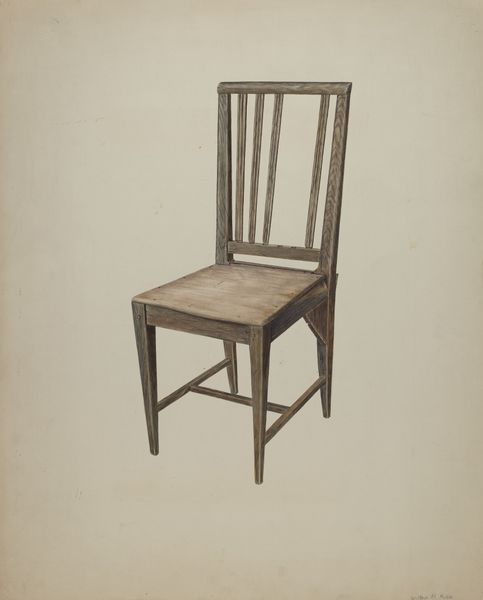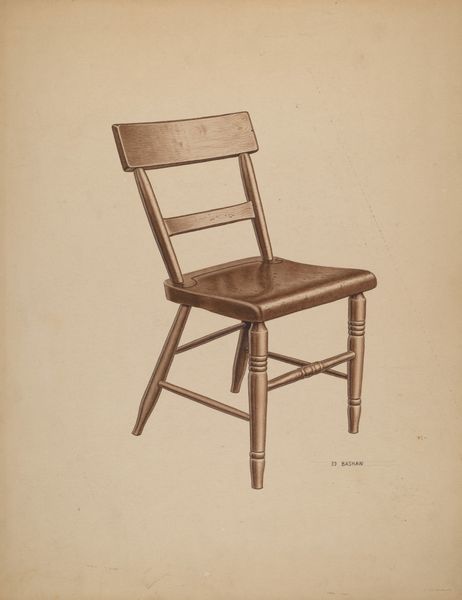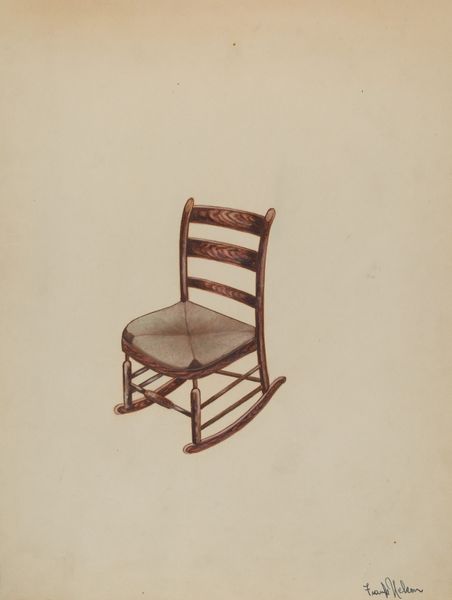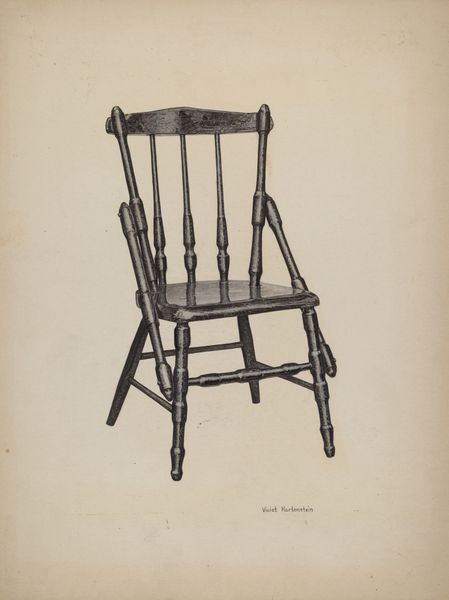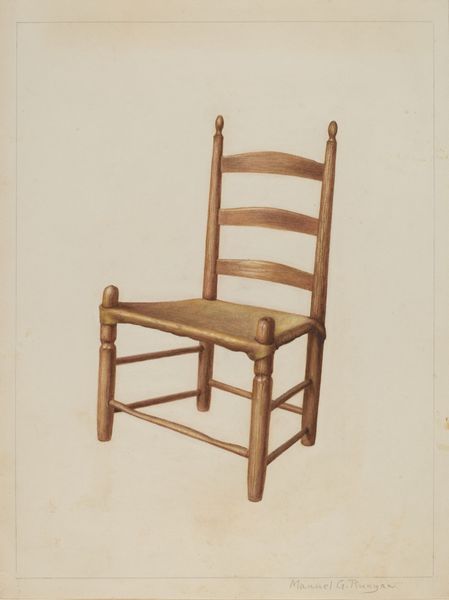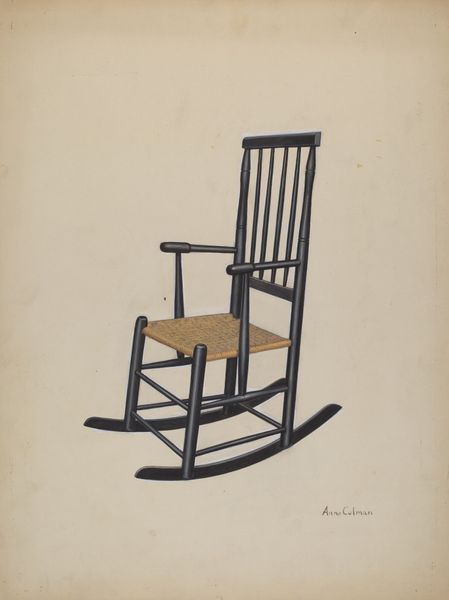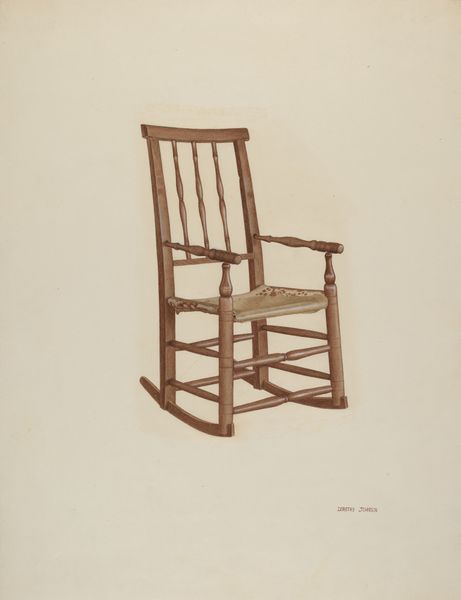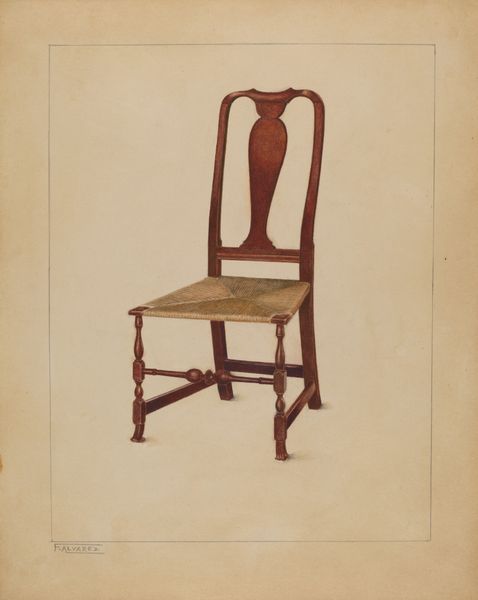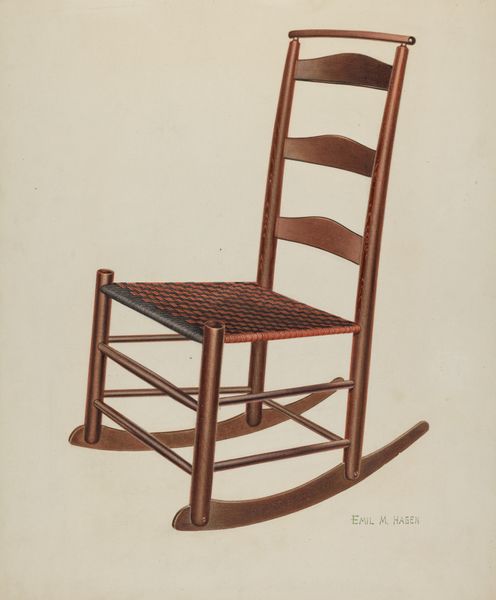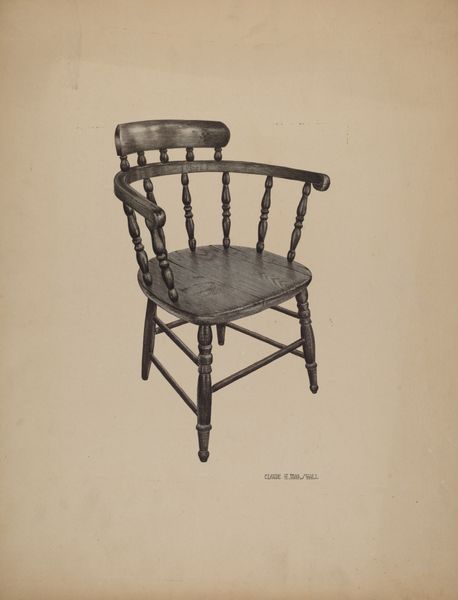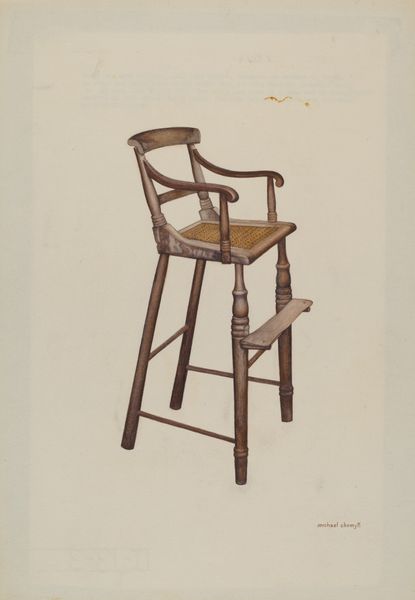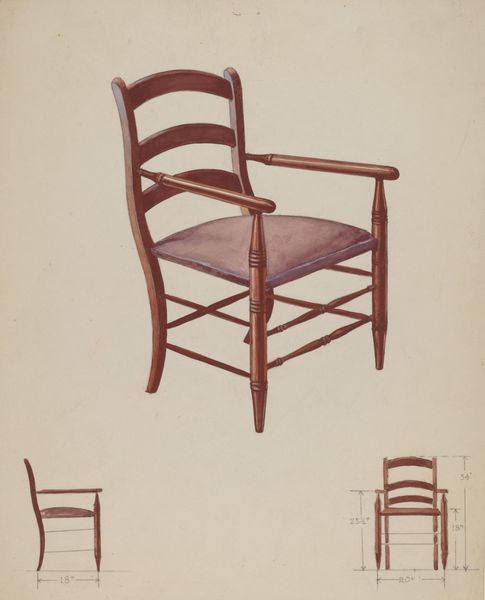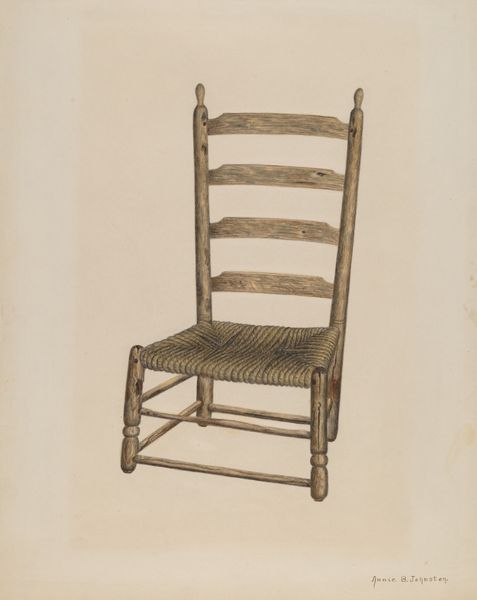
drawing, pencil, wood
#
drawing
#
pencil
#
wood
#
realism
Dimensions: overall: 36.1 x 28.7 cm (14 3/16 x 11 5/16 in.) Original IAD Object: c. 2 1/2'high
Copyright: National Gallery of Art: CC0 1.0
Curator: Before us, we have Majel G. Claflin’s "Small Wooden Chair," created around 1937. Editor: It’s such a simple rendering, almost humble, of this common, domestic object. Curator: Claflin rendered this drawing, in pencil, in the throes of the Depression era. Consider that during the 1930s, under the New Deal, the Works Progress Administration employed artists to document and celebrate everyday life, really imbuing it with meaning. Editor: Absolutely, and the focus on something as elemental as a chair screams material accessibility—wood! Easy to acquire, simple to construct. There's a real democratization in this depiction of handcrafted furniture, isn’t it? Curator: Definitely. This work showcases the democratic spirit embraced and supported by New Deal programs that really challenged what could or could not be deemed “high art." The artist spotlighting this object raises questions around what is valued and what is often ignored within American society. It encourages us to pause and honor common artifacts in the home. Editor: I find it amazing, too, how much the artist manages to convey about the nature of wood itself. Note how much the grain informs the overall effect; the wood has weight. You can almost imagine the specific type of wood through the variations of shade. It almost speaks of an ethics of making, too. Curator: Interesting perspective. We’re looking at this quiet commentary on material culture, where art elevates ordinary things. Editor: Yes, it invites us to think about the labor embedded within everyday items—the cutting, joining, shaping… all that careful handiwork that might usually go unseen. And for viewers in the '30s, seeing an artist paying this sort of attention probably gave added importance to a type of work readily at hand in that period. Curator: Right, that perspective really shifts the lens on production during that specific moment in American history, with questions around the status and support of arts being central to this cultural movement. It allows viewers today to pause and remember the hard work that makes this nation possible. Editor: Beautiful. It certainly resonates today. Curator: Indeed.
Comments
No comments
Be the first to comment and join the conversation on the ultimate creative platform.
